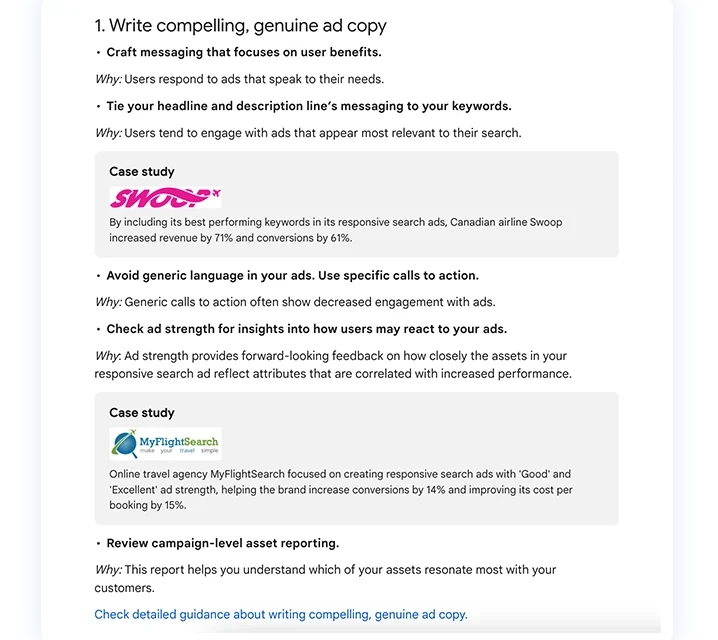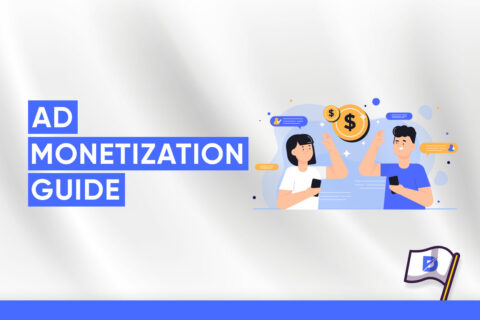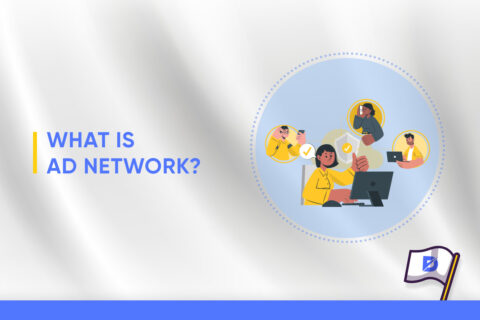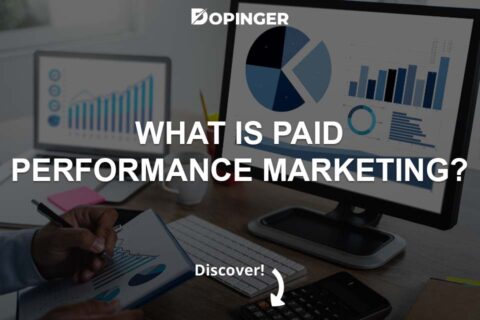With Google Ads, you can promote your products and services on Google search results, Google partners, YouTube and Google Adsense member websites.
With Google Ads, a digital advertising service, you can achieve a good ranking in SERPs in a very short time and reach your digital marketing goals in a shorter time.
Google Ads appear at the top of SERPs, compatible with search results and organically. Google ads are the areas with the highest click-through area in SERPs. If you create a Google advertising strategy, you can increase advertising performance.
We have compiled 8 methods for you to optimize Google Ads advertising. If you apply these methods, you can achieve ad optimization, low-cost search network ads, and effective keyword strategies.
Add Negative Keywords
Negative keywords are phrases that you do not want your Google Ads to run on. If you want to optimize an ad campaign, be sure to use negative keywords. These words help you make detailed adjustments to your ad campaigns and prevent your ads from appearing to users who have irrelevant search experiences.
If you add negative keywords to a campaign, your ads will be available to users of the Google Search service. In this case, ads are shown to users who are most likely to be interested in your products and services on Google. In this way, you can achieve higher conversion rates and create more effective advertising campaigns.
If you use negative keywords, you can direct your traffic to the most relevant campaigns first. If you have another competitor selling the same product, you can add your competitor’s name and words that remind you of it as negative keywords. In this way, you can direct the incoming traffic to your own campaign. However, negative keywords allow you to exclude irrelevant search terms and prevent your brand from appearing in searches that would be inappropriate.
In a Google Ads ad campaign, negative keywords work better in a broad match strategy than in an exact match or phrase match strategy. Because your ads will appear on a wide search query base, you can use negative keywords to avoid showing ads to audiences that are irrelevant and have low conversion chances. This also prevents your advertising budget from being wasted.
If you want to manage search traffic on your website, first do negative keyword research. Monitor performance regularly and always be on the lookout to add new keywords.
Negative keywords are groups of words that you consciously exclude from your campaigns when you do not want your ads to appear in the query phrases you specify. If you do not use negative keywords in a Google Ads ad campaign, you are making a very common mistake. Be sure to use these words.
Write Compelling, Genuine Ad Copy
The impact of ad copy affects ad performance. If an ad copy attracts users’ attention and contains an effective call to action, you can achieve a higher conversion rate.
It is also very important that your ad texts are original. Therefore, you should create original and eye-catching advertising content that will attract the attention of your target audience.
Google recommends that you pay attention to the following points when creating interesting and original ad text:
- Explain which users’ needs you will address and which problems you will find solutions to.
- Be sure to include keywords related to the ads in the title and ad text.
- Use a strong call to action in your ads. This message should align with your goals.
- Use responsive search ads to analyze user reactions to your ads.
- Monitor your advertising campaigns regularly and understand your ad copy that is working well.
- Your ad texts should appeal to mobile and desktop users and different screen sizes.
- Experiment with titles of different lengths.
- Create dynamic search ad campaigns that will automatically generate ad titles and text by Google Ads.
- Try to see the effect by testing different ad texts and messages.
Design visuals along with advertising texts in high quality and high resolution. Also include your brand’s logo and business name in the advertising elements.
Google allows you to create personalized ad texts with responsive search ads by leveraging the power of artificial intelligence in its official source. If you maximize the relevance of these ads, you can get more customers and conversions. Ad text can be created personalized and keyword-focused. Texts should be original, interesting and persuasive.
Optimize Your Landing Pages
Landing pages are pages you design to get a user to click on an ad and take the action you want.
After clicking on the ad, the user can purchase a product, fill out a form or download a file. Be sure to optimize the landing page in Google Ads. Your landing pages should be created relevant to the advertising content. The user who has an expectation in the advertisements should get what he expects on the page that opens when he clicks on the advertisement.
If you optimize your landing page, your click-through rate and conversions will increase. This means lower bounce rate and higher ad success.
If the design and message on your landing page are similar to the ad, users will think they are in the right place and the click-through rate will increase.
If a user who clicks on your ads sees engaging content and a strong call to action when they log in to your website, they will be more likely to take action such as purchasing or signing up.
If your ad and landing page are consistent, users will trust that you deliver on your promises.
When optimizing the landing page, you can perform the following actions:
- Make elements such as font, font and size on your web page eye-catching. Make sure important information such as your main title, subheadings and calls to action are eye-catching.
- Your landing page should have a responsive design. Test whether users have a seamless experience on mobile devices and different screen sizes.
- You can design automatic ad banners and landing pages by creating dynamic search network ads based on the content status on your website.
- Share high quality visual and video content that is compatible with your advertising content on your landing page. Visual and video contents are more interesting than text contents.
- Match your ad copy and landing page to the search terms users are searching for.
You can give users a personalized experience. In this way, the click rate increases, the bounce rate decreases and you can achieve higher conversions.
Improve Page Speed
User experience on websites is very important to the SEO process. One of the most important points affecting advertising performance is page opening speed.
Site opening time plays an important role in whether a visitor who clicks on your ad text decides to spend time. Users tend to abandon web pages that take more than 3 seconds to open. At the same time, the faster your web page opens, the better the user experience will be.
To increase the speed of your web page, especially when it opens after the ad, optimize images, clean up unnecessary code structure, use CDN and try to find existing errors by analyzing your web page speed.
After optimizing your website’s page opening speed, monitor it regularly. You can analyze your page speed with tools such as Dopinger’s Website Speed Test tool and Google Pagespeed Insights.

Use the Right Keyword Match-Types
Google Ads advertising is an area where you can directly associate your products and services. You can optimize your Google Ads advertising campaigns based on user intent through keywords.
A user searches for a specific keyword on Google. The Google Ads auction system then analyzes the search term based on its relevance and specific characteristics and shows relevant ads to the user.
You create your ads based on the type of keywords and modifiers you use in your ads.
You can use match types to optimize your ads correctly. Google Ads match types are as follows;
- Broad Match: You tell people that your ads can be shown to people searching for synonyms of your targeted keyword. It allows you to target the broadest base.
- Phrase Match: This is the matching type that ensures that your ads are displayed only when users query the exact word groups you specify. Your ads appear in searches made for the keywords you added to the ad. Your budget is used more efficiently and you can place targeted ads.
- Exact Match: This is the match type where your ads are shown only when exact keywords are searched, like phrase match. However, your ads will also be shown when your Google ads are searched for spelling errors, plural forms of the word, or word groups that can be replaced with your keywords. In this way, you can also reach people who want to reach you but make spelling mistakes.
- Broad Match Editor: This is the match type where you can control the matching keywords. You can get higher reach than phrase match and more control than broad match.
Thanks to the match types, you can determine which keywords your ads can be published on. At the same time, you can gain control over advertising delivery for different and relevant search queries.
Focus on your Quality Score
Quality score is the score between 1-10 given to your keywords by Google in the process of evaluating the quality of your Google Ads. Google evaluates hundreds of factors in your ads and tries to provide organic results.
To optimize the ad experience, quality score is an important factor that affects ad ranking.
If you have a keyword with a high quality score, your cost per click will be lower than words with a low quality score. If an ad has a very low quality score, it may have fewer impressions. In this case, your ads will not be displayed for every search query.
You can target the top positions with a high quality score. Focus on increasing your quality score to get higher ad positions at lower costs.
The metrics you can use to increase your quality score are as follows:
- Expected Click-Through Rate: It refers to the probability of clicking on ads when ads are shown in your ad keyword. This is an estimated metric and differs from the actual click-through rate.
- Ad Relevance: Allows you to analyze the compatibility of your keywords with ads. Google wants to show users ads related to the terms they search for, and if the relevance is high, the quality score increases.
- Landing Page Experience: Meeting users’ expectations on the page they are directed to. Landing page experience and high relevance improve user experience. The promise in the landing page and the ad should be consistent.
- Ad Text: The title, display URL, and text in your ad affect the quality score. There should be keywords in the URL and text, and there should be a strong call to action in the text.
- Mobile compatibility: It has been mandatory since 2015 for your website to be mobile compatible for quality score and Google ranking.
- Past Performance: When determining your quality score, Google also pays attention to your past ad performance.
- Page Opening Speed: The faster your landing page opens, the higher your quality score will be.
- Geographic Performance: It affects the quality score in the geographical region where you target your campaign.
Run Retargeting Campaigns
Retargeting is advertising campaigns in which you target potential customers who have previously visited your website, purchased from your website, added products to the cart and abandoned the cart.
With these campaigns, the system tracks people who have previously visited your website. Users who have visited your website in the past will be shown your ads when they visit other websites. In this way, your ads are shown to an audience that is more likely to convert into customers.
It allows people to easily remember your brand with retargeting campaigns. At this point they are more likely to click on your website to have a purchasing experience.
If a user has visited your e-commerce site before but did not purchase the product despite reviewing it, retargeting ads will be useful to you. With these ads, users see ads for your products and services while browsing other websites. In this way, their interest in the products they have previously examined may be revived. When they see your products again, they are more likely to visit your website and buy.
Let us offer you some suggestions for Google Ads retargeting campaigns;
- Design campaigns with retargeting lists for different types of visitors, such as those who viewed the product and abandoned the cart.
- Create ads specifically for certain products and pages that are of interest to users. This allows you to get personalized ads. In this way, the probability of conversion, attracting attention and purchasing increases.
- Keep the number of times your ads are shown to the same person low in retargeting campaigns. In this way, you can show retargeting ads to more people and use your budget more efficiently. On average, 2-3 views per person per day is sufficient.
- Design relevant and effective campaigns by creating ads that fully include the product in your ads.
- Apart from the remarketing campaign, also create different advertising campaigns for the same product and service.
- Monitor ad performance regularly, apply A/B tests and improve your ads regularly.

Use Geo-Targeting and Localization
Geotargeting and localization is showing your ads to users in a specific geographic location or within a specific environment. You can use geotargeting and localization in your ads, especially if you have a local business or are targeting people in a specific location.
Geotargeting and localization increases the ad relevance of your Google Ads campaigns. At the same time, you can use your advertising budget more efficiently and create more effective advertisements with less budget.
If you make geographical targeting, you can determine the city in which your ads will be displayed or your ads will be broadcast to a certain number of users. Imagine you run a pizzeria in New York. With Google Ads, your ads are shown to users searching for a pizzeria in New York. In this way, your physical store will be visited by more people and you can get more customers.
Let’s give some tips about geotargeting and localization;
- To deliver your ads to local audiences, add local expressions such as place, neighborhood, city, region in front of your keywords.
- You can use local dialect and slang expressions in your ad texts so that your local audience can reach you.
- In order to create people’s familiarity with your brand, refer to important places and events in your targeted region in your ads.
- Attract people’s attention by showing specific images and videos from local people or the area in your ads.
- Offer personalized campaigns to people and create campaigns, offers and discounts specific to that region.
- If you have local delivery and special services, clearly state these in your ads.
If you have a physical business, you can generally target people who live in the area close to your office. Apart from this, if your products and services do not depend on the physical location of your prospects, you can create your campaigns based on geographically targeted offers based on seasons, weather conditions and user needs. You can also use negative keywords in geotargeting.
Conclusion
Keyword selection, negative keyword use and high quality score are important to optimize your Google Ads.
Improve your ad campaigns at the same time as increasing page speed, optimizing your landing page, and investing in match types. Conduct regular A/B tests and monitor ad performance to plan necessary improvements.
You can get professional support for successful Ads advertisements. For this, our expert team can provide you with Google Ads management service. You can contact us to get detailed information and benefit from our professional support for your Google Ads.
Frequently Asked Questions About
Continuously monitor performance while optimizing your Google Ads ad campaigns. While optimizing your underperforming ads, develop strategies that will make your successful ads more successful. At the same time, create successful campaigns at all levels with A/B testing.
If you want to create Google Ads advertising campaigns, run campaigns in different ad types simultaneously. You can create Google search network ads, Google ad network ads, shopping ads, video ads, text ads, mobile application ads, native ads, smart ads, dynamic ads.
If you want to be successful in Google Ads advertising campaigns, you can get Google Ads advertising consultancy services. With the Google Ads Management service, you can achieve high ad conversions at low costs with professional advertising experts.






No comments to show.